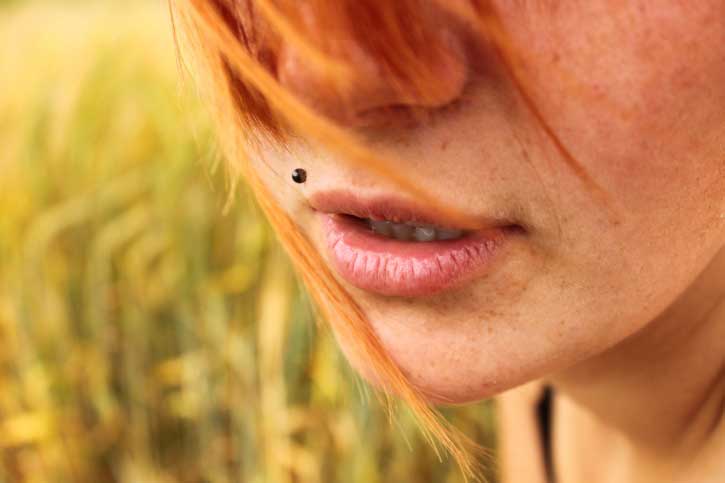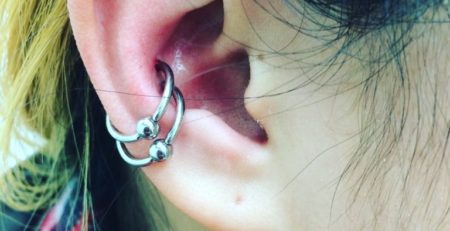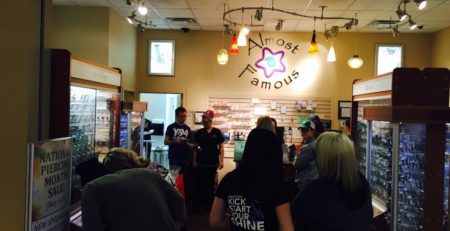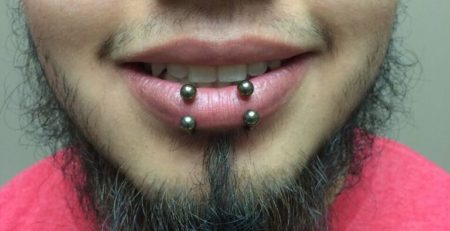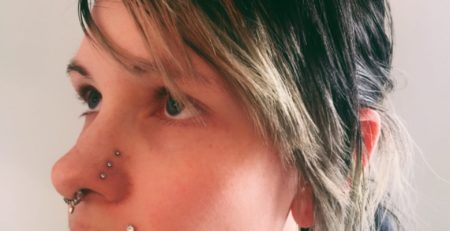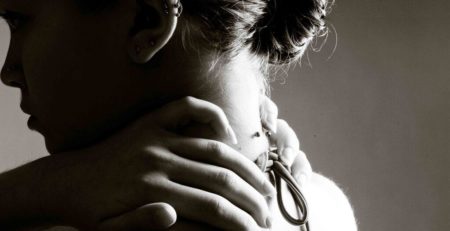10 Things You Need to Know Before Being Pierced
-
Identification is required every time you wish to be pierced.
- No matter if it is your first time being pierced with us, or you visit us often, you must present a valid form of identification at the time of the piercing. State and local laws mandate that identification be presented in order to receive a piercing regardless of age. If you have been pierced with us before, we are unable to pull identification off of previous release forms for numerous reasons – the identification used previously may have expired, the identification must be copied onto each and every release form – to name a few reasons. Make sure you call ahead to the location you plan to visit for specific identification requirements. A list of our locations and contact information can be found here.
-
Minors must be accompanied by a parent or legal guardian.
- In all Almost Famous Body Piercing locations, minors must have consent from a parent or legal guardian in order to receive a body piercing. The parent or legal guardian must be present in order to give consent. Letters or notes from parents are not accepted. Parents and legal guardians must present appropriate identification to verify that they are legally able to give consent for the minor presented. Make sure to call ahead to the location you plan to visit for specific minor and parent/legal guardian documentation required.
-
You may not have the anatomy for the piercing you wish to receive.
- Every person’s anatomy is slightly different. Every piercing requires a certain anatomical shape in order to be successful. If the particular body part that you wish to pierce does not have the appropriate shape, it may not be possible to perform the piercing. Or, if the piercing is performed, it may not heal successfully. A few of the most common examples of this: an “outtie” navel is unable to be pierced because the skin protrudes too far in the center of the belly button, leaving no room inside of the navel for jewelry to fit; industrial bars need to be placed in ears that have a prominent curl around the rim. Please be aware that you may not be able to receive a piercing you have your heart set on getting, but your piercer will absolutely work with you to brainstorm ideas that may be similar to the piercing you had initially wanted.
-
Your piercing may not look like the photograph you bring in.
- The pictures of piercings commonly found online are of beautiful, healthy, healed piercings. Like any wound, the body needs time to heal. During this time, your piercing will be red, sore and possibly swollen. Longer jewelry is needed to allow for proper drainage of the piercing wound and to accommodate for swelling. It will take time, patience and diligent aftercare in order for the piercing to look as beautiful as those found online. If you run out of aftercare products before your piercing is healed, we carry our aftercare products online for your convenience.
-
Every piercing and every person heals differently.
- One of the most important things to realize with piercings is that every part of the body has its own unique healing process and timeline. For example, oral piercings such as the tongue and the lip tend to heal much quicker than piercings placed in the cartilage of the ear. The type of tissue being pierced as well as the depth and length of the piercing plays a significant role in the length of time the piercing will take to heal. On top of that, the way that your body reacts to a specific piercing may be completely different than the reaction your friend has to the piercing. Each person’s immune system may have a slightly different reaction to the piercing which will affect the length of time their piercing will heal. So while we can give you a relative timeline for healing, it is important to know that aftercare is crucial in assisting your body to heal your new piercing.
-
Not all jewelry is suitable for an initial piercing.
- In order for a piercing to heal successfully, it is important that the jewelry placed in the fresh piercing is of sufficient size, shape and metal quality. Fresh piercings will swell and the wound will drain. To accommodate for this normal part of the healing process, the jewelry must be of a long enough length and or large enough diameter so drainage isn’t trapped, and the jewelry won’t embed in the skin. The jewelry also needs to place the least amount of stress on the piercing wound to heal. Jewelry that is heavily decorated or of a certain design can place unnecessary stress on the piercing wound. The quality of the metal also plays a key role in the healing process. Low quality jewelry can cause excessive irritation of the piercing wound, allergic reactions and prolonged healing process, to name a few.
-
Everyone’s pain tolerance is different.
- Pain is relative to the person receiving the piercing. Every piercing will feel different, and every piercing will feel different for every person. Many factors play into the amount of pain you experience during your piercing: your anxiety level prior to and during the piercing, the gauge of the jewelry you have selected and the type of tissue that is being pierced. The most important thing to remember about piercings is that it is a quick process so as soon as you feel the needle, the piercing is already done.
-
Normal signs of healing are often mistaken for signs of an infection.
- Because piercings are wounds, they will take time and patience to heal. Normal signs of healing will be redness, tenderness to moderate pain, swelling and a drainage that is clear, pale yellow or white in color. These normal healing symptoms can last for the entire duration of the healing process, which can take weeks or months. Signs of an infection are when these normal signs of healing reach the extreme end of the spectrum: if the area is hot to the touch, extremely painful at all times, the drainage is green and/or bloody, or you have an unexplained fever. These symptoms require that you see a doctor for further treatment.
-
Healing bumps are not
- A big misconception in the healing process of a piercing is the difference between a healing bump and a keloid. A healing bump is a bump that occurs next to the piercing, oftentimes resembling a pimple. These occur when drainage gets trapped under the skin rather than draining out of the piercing. These are very common, and the treatment is consistent sea salt soaks and sometimes tea tree oil. A piercing bump will go away, but slowly. A keloid on the other hand is an excess overgrowth of scar tissue. These occur when the body does not know when to stop producing scar tissue. True keloids are quite rare, and they can only be surgically removed.
-
Other than earlobes, all piercings must be done with a needle.
- Many people are terrified of needles or the idea of a needle being used for their piercing. However, needles are absolutely necessary for the piercing of any body part other than the ear lobe. Piercing guns are manufactured to insert a very specific piece of jewelry – a stud and clasp type jewelry. This jewelry is highly inappropriate to place in any other part of the body than the ear lobe. Because of this, a piercing gun cannot be used to insert the appropriate jewelry needed for any other type of piercing outside of the ear lobe. Additionally, when this type of jewelry is inserted into the cartilage of the ear, a needle is used to create the piercing and the stud and clasp type earring is inserted manually and not with a piercing gun due to the damaging effects using a piercing gun has on the cartilage of the ear.


